Put an end to Snoring with Natural Home Remedies
June 3, 2014 by admin
Filed under Tips for Ayurveda
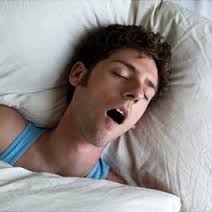 What causes snoring ? Why does it affect only a few people ?
What causes snoring ? Why does it affect only a few people ?
Snoring is the sound produced, while sleeping, due to the vibration in the respiratory structures. That is to say that the air movement gets obstructed while breathing, resulting in the sound. Snoring is associated with loud and irritating noise that causes inconvenience to the people around them and also becomes a major source of sleep distraction and irritability for the snorer as well.
Some of the causes of snoring include muscle tone of the tongue, blockage of airway, age factor, alcoholic beverages, certain medications and sheer physical exhaustion. Tonsil enlargement may also give way to snoring. For some people, the narrowing of throat or pharynx while breathing during sleep is enough to cause vibration of soft tissues in the pharynx leading to snoring.
You will come across people snoring especially while traveling in the train. The problem is not significant or noisy for women. Either way it is embarrassing which can be minimized or ended with the right approach.
Natural Home Remedies for Snoring
Given below are few effective home remedies and natural treatment for snoring. Snoring Home Remedies mainly involve few life style changes.
Lose weight:
Losing weight is one of the best recommendations. Obese people tend to have breathing problems during sleep. Weight reduction puts an end to snoring.
Give up smoking:
Smoking causes swelling and increased nasal congestion, mucous in the throat area. It is ideal if the snorer quit smoking as it will have a huge impact.
Keep away alcohol:
Alcohol is a major reason for snoring as intake of alcohol causes relaxation in the soft tissues and muscles in the throat leading to snoring.
Sleep posture recommendations:
Ideal posture while sleeping is on the sides. This will reduce the intensity of sound created while snoring.
Elevate your head by 4-5 inches as it eases breathing and prevents tongue from rolling back. Use cushions for this. Adjustments and switching over one’s sleeping posture may also make way for the control of snoring.
Diet restrictions
Avoid heavy meals, spicy and oily foods for dinner. Such foods aggravates the problem of snoring.
Consumption of Caffeine should be reduced to overcome snoring.Excess sweets and carbonated drinks taken at dinner may lead to snoring
Ayurveda, the Science of healing recommended the following Home Remedies:
- In a glass of warm water add ½ tsp of cardamom(elaichi) powder. Mix well and consume at bed time. This will aid in proper breathing and gradually help reduce snoring.
- In a cup of warm milk add 2 tsp of turmeric (haldi) powder. Mix well and consume at bed time. Aids in having a sound sleep without snoring problems.
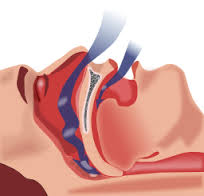 Follow a regular sleep routine. Sleeping at fixed times and waking up at the same time is believed to reduce snoring. Physical measures are also available like nasal strips, oral and dental appliances. These are expensive accessories.
Follow a regular sleep routine. Sleeping at fixed times and waking up at the same time is believed to reduce snoring. Physical measures are also available like nasal strips, oral and dental appliances. These are expensive accessories.
If you are snoring even after following the home remedies it is time to consult a physician. Snoring is not a disease but causes inconvenience to your spouse and children. If not addressed in time it can lead to Sleep apnea-another sleep disorder.
Get rid of Prickly heat with Home Remedies
April 7, 2014 by admin
Filed under Tips for Ayurveda
Here are a tips to get rid of prickly heat with home remedies. Prickly heat rash is also called miliaria or heat rash that can develop after a person sweats far more than usual and sweat glands become blocked. Prickly heat causes an itchy rash of small red raised red spots with a prickling or stinging sensation.
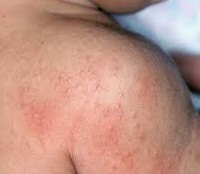 Prickly heat develops anywhere on the body, but most commonly occurs on the face, neck, back, chest and thighs. Mostly affecting parts of body covered with clothing.
Prickly heat develops anywhere on the body, but most commonly occurs on the face, neck, back, chest and thighs. Mostly affecting parts of body covered with clothing.
Causes of prickly heat rashes:
Prickly heat begins with excessive perspiration, usually in a hot, humid environment. The perspiration makes it easier for dead skin cells and bacteria on the skin to block the sweat glands, forming a barrier and trapping sweat beneath the skin, where it builds up, causing the characteristic bumps. As the bumps burst and sweat is released, there may be a prickly, or stinging sensation that had lead this condition get its name.
Apart from the external heat and sweating, prickly heat has several other causes, such as overwork, intake of alcohol, smoking, unhealthy and stressful lifestyle, excessive consumption of junk food, untimely food eating habits, acidity, food poisoning and side effects of certain medicines.
Home remedies are based on the principles of Ayurveda, the ancient Indian science of healing, and are completely natural, non-invasive, and can be prepared at home. Consult your Medical practitioner if the symptoms continue. Follow mixing proportions and directions for use.
Home Remedies To Get Rid Of Prickly Heat
1. Margosa leaves (Neem leaves)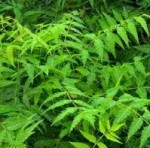
Take some neem leaves and mash them into a fine paste using water. Smear the paste over affected areas and leave it on the skin until completely dried. Margosa leaves has antibacterial property and helps in killing the germs and providing immediate relief from other skin diseases as well.
2. Ice cubes
Ice is another great solution for reducing prickly heat caused due to hot and humid temperature. Rub small ice cubes over the rashes to reduce inflammation and ease prickly sensations. It gives a nice cooling effect. Ensure intervals of 5 mins after each rub.
3. Cold water
If ice cubes are not available you can use cold water stored in an earthern pot. Soak a cotton cloth in cold water, squeeze out some water and place the cloth over the affected area until all the water has been absorbed. Repeat 2 to 3 times a day. This will give you instant relief from inflammation and prickly heat.
4. Sandalwood powder
Take 2 tbsp each of sandalwood powder and coriander powder. Add 2-3 tbsp of rose water and stir to form a smooth paste. Smear the paste over the affected areas and leave it to dry. Rinse off with cold water thereafter.
Further reading: How to prevent nose bleeding in summer
5. Cucumber or papaya pulp
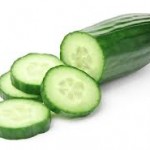 Take some cucumber or papaya pulp and apply on the affected areas. Leave it for 25 to 30 mins. Wash off with cold water. This application will cool the affected area and relieve the itching.
Take some cucumber or papaya pulp and apply on the affected areas. Leave it for 25 to 30 mins. Wash off with cold water. This application will cool the affected area and relieve the itching.
6. Fuller’s earth
Fuller’s earth or multani mitti is yet another popular home remedy for treating prickly heat. Prepare the pack by mixing 5-6 tbsp of fuller’s earth, 3-4 tbsp of rose water , add water to form a thick paste. Apply the paste over prickly heat and allow it to dry for 2-3 hours. Thereafter, wash it off with cold water.
7. Aloe Vera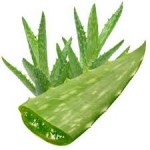
Aloe vera is known as an universal skin protector. Apply the gel of the aloe vera leaves on the affected regions. Leave it on for 10 to 15 mins and go for a cold water bath.
8. Baking Soda
Prepare a cooling compress for your itchy and irritating prickly heat. Dilute 1 tsp of baking soda into 1 cup of cold water. Soak a clean washcloth into the solution and squeeze it out to remove excess water. Apply the cloth to the rashes. While the water will reduce inflammation, the baking soda will work towards easing itching and irritation. For best results repeat this process 4 to 5 times a day.
9. Cornstarch
Prepare a smooth paste by mixing cornstarch or 2 tspn corn flour with water. Smudge the paste over the affected areas and allow it to dry for about ½ hour. Thereafter, go for a cold water bath and wash off the paste.
10. Chickpea flour ( besan) paste
Take ½ cup of chick pea flour, add paste of 15-20 neem leaves. Add required water to make a paste. Mix well and apply the paste on the affected areas. Leave it for 15 to 20 mins. Wash off with cold water. Combination of besan flour and neem leaves provides relief from inflammation. Burning sensation is cooled off also relieves dead skin cells.
Read on: How to Overcome common summer health problems
11. Oatmeal
Oatmeal is an effective home treatment for prickly heat. Add ½ cup of oatmeal into the bath tub and stir it well. Step into the bath tub and lie in there for 15 minutes to ease the tenderness and soothe the skin. Repeat this twice a day. This is considered a luxury. You have the other simple home remedies to get instant relief.
Supplements to be taken internally to minimize the irritation of prickly heat. Avoid spicy food, junk food. Minimize on fried items as it gives heat to the body. Forego pickles till you get relief. Summer is the time when most households prepare pickles in bulk due to the availability of mango, and low prices for tomato etc.
- Lime Juice: Drinking lots of lime juice also works well in treating prickly heat. Consume 3 to 4 glasses of lime juice daily and you are sure to see the effects in one fortnight itself.
- To get relief from severe itching: Soak 1 tspn of Cumin Seed (Jeera) and 1 tspn of Coriander Seeds (Dhaniya) in water overnight. Strain this solution in the morning and drink. You will observe the difference within 30 to 45 mins.
Over the counter Medication to get rid of Prickly heat
Applying calamine lotion (Lacto calamine lotion available with different bases), it will soothe the affected area of skin. This layer will keep your affected area cool and the irritation will disappear in a day or two. Hydrocortisone cream is recommended if your skin is particularly sore and itchy.
How to Prevent Prickly Heat
To help protect yourself and your little ones from prickly heat, follow the following tips:
- Avoid tight clothing that can irritate the skin. Preferable use cotton and light colored cloths.They prevent sweat accumulation and dry off easily.
- Avoid hot and humid weather. When unavoidable stay in the shade. Use fan, cooler or air-conditioning at a safe distance with a soft air circulation.
- Keep your sleeping area cool and well ventilated.
- Frequent cool showers or cool baths with mild soap can help to prevent heat rash. Avoid using synthetic or perfumed soaps which dries the skin.
- Avoid using creams or oils – they block pores and do not aid sweat release.
- Opt for a short hair cut to avoid sweat remaining on the scalp for long. Women can place a hair band while working in the kitchen or into domestic chores. This will avoid hair contact to the neck.
Avoid prickly heat this summer .Take care of your family and dear ones. You can give your input in the comments section.
Further reading: How to overcome heat this summer
Alopecia Areata-Hair loss with small Oval patches on Scalp
March 20, 2014 by admin
Filed under Tips for Ayurveda
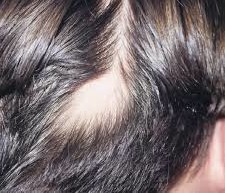 You may have observed hair falling off causing small, oval patches on the scalp of your head. This is an illness and the general term used by doctors is Alopecia Areata indicating hair loss. People get scared by seeing the patches on the scalp and assume that they are affected by some disease. It usually begins as one or more small, round or oval, smooth patches and affects both males and females. Alopecia Areata is a type of hair loss that is caused by auto immune disease.It does not destroy the hair follicle, there is always a high chance for hair re-growth.
You may have observed hair falling off causing small, oval patches on the scalp of your head. This is an illness and the general term used by doctors is Alopecia Areata indicating hair loss. People get scared by seeing the patches on the scalp and assume that they are affected by some disease. It usually begins as one or more small, round or oval, smooth patches and affects both males and females. Alopecia Areata is a type of hair loss that is caused by auto immune disease.It does not destroy the hair follicle, there is always a high chance for hair re-growth.
If you have an autoimmune disease such as type 1 diabetes, thyroid disease or vitiligo (white patches on the skin) there are chances you acquire this hair loss problem as the cells in your body that normally fight infection (white blood cells) attack some of your own cells by mistake.
According to Ayurveda, this is caused due to aggravation of Vata & pitta . In the patients affected by Alopecia Areata, they gather around hair follicles, causing inflammation / burning that makes your hair stop growing and fall out. The positive fact is that even though there is quick hair loss there are always chances for hair re-growth.
Some people have one or two small patches the size of a one rupee coin. For few people the spots are not seen due to thick hair or inside the scalp.
People try to cover up these patches by trying a different hairstyle or wearing a cap, scarf etc. The teenagers and youth are badly affected badly due to the embarrassment caused by the patches on the scalp. They tend to avoid gatherings due to lack of confidence.
If you observe such patches on your scalp you need to consult a doctor or a skin specialist immediately. There are numerable medicines that activate hair growth and can counter such hair fall problems. This is a common problem as 1 in 10 people are facing this problem these days.
Symptoms of Alopecia Areata
Individuals will get patches of hair loss over a few weeks. The patches are usually coin-sized and round or oval. The scalp without hair is smooth and looks normal (no indication of redness or inflamed). There are reported cases of tingling and minor pain in those areas. There may be short hairs with length of around 3mm at the edges of these patches also called as exclamation mark hairs.
Alopecia areata can also affect any part of your body that has hair, including your eyebrows, eyelashes, beard, armpits and genitals. The individuals also suffer from nail pitting, your nails appear rough and slightly dented.
Treatments for Alopecia Areata
There are topical ointments prescribed by doctors based on the extent of hair loss. Depending on the size of the area being treated, you may need several injections. The regrowth usually starts after three months or so. If you have more than a couple of patches of hair loss, your doctor may suggest using steroid injections or medicines to apply on your skin.
Steroid injections are the best treatment for areas of patchy hair loss, with re-growth usually starting in one to two months. Steroids are drugs that reduce inflammation.
However, they don’t work for everyone, and they aren’t usually used for children.
Diet regulations for Alopecia Areata
Diet also plays an important part in this treatment. Iron deficiency leading to anaemic condition causes excessive hair loss. Iron and zinc supplements should be taken if the diet does not produce enough on its own.
Intake of fruits, vegetables, milk, eggs and cheese, chicken, fish will supply your hair follicles with the vitamins they need for optimal operations. Consuming water per day will help transport the needed nutrients to your hair and help keep your hair strands hydrated and strong
Home remedies for Alopecia Areata
- To a cup of coconut milk put in two tablespoons of gram flour. Apply on the scalp and massage softly. Wash the hair after five minutes. Use this practice one time in a week.
- Round patches of baldness appear on the scalp when hair fall off in bunches. Onion juice should be rubbed into such bald patches regularly for some time. It will help the hair to grow again.
- Application of neem oil regularly for two-three months at the bald spots helps the hair to grow again.
- Pure aloe vera gel can be applied liberally to the scalp, massage thoroughly and rinse.
Being alert and consulting the specialist on time will be the best solution. As they say a stitch in time is ideal to combat the hair loss. Reassurance by near and dear ones is the major factor that needs to be addressed in the treatment. The individual has to be explained that this is not a major disease and the hair will grow again after a small gap with proper care and medication.
If you know of any other home remedies, do reply in comments.
For further reading: Prevent Premature Hair Whitening
PREVENT PREMATURE HAIR WHITENING
March 5, 2014 by admin
Filed under Tips for Ayurveda
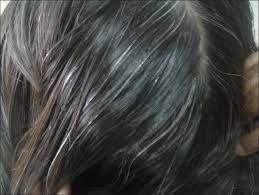 Premature hair whitening is a common problem observed in young boys and girls these days. It is very embarrassing for the children studying in school and college. They look aged than their classmates and colleagues.
Premature hair whitening is a common problem observed in young boys and girls these days. It is very embarrassing for the children studying in school and college. They look aged than their classmates and colleagues.
Coloring hair is a temporary solution. Coloring will change the natural blackness of hair to various shades based on the hair color used. If you are having allergy to chemicals the damage is severe.
Ayurvedic treatment helps to prevent premature white hair and restore natural hair color. The main reason of premature hair whitening is because natural pigmentation of hair tends to disappear as a person ages and eventually back hair turns to white color. The other reasons of premature hair whitening at an early age is mostly due to certain diseases, hereditary or nervous shock. It is advisable to consult a doctor.
Some of the popular Ayurvedic treatments to prevent premature hair whitening:
- Applying a mixture of coconut oil and curry leaves on a daily basis is a time tested treatment for white hair. Heat 1/8 cup of coconut oil along with ½ a cup of curry leaves in a saucepan at medium flame. When it comes to a boil put off the flame. Allow this mixture to cool. Apply the mixture onto your scalp and leave it for 15 to 20 mins. Wash your head with lukewarm water and mild shampoo. You can transfer this mixture to a clean dry bottle. Filter the oil with a cotton gauze cloth when it reaches the base.
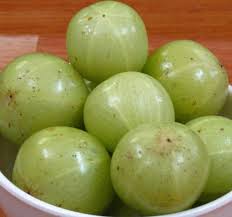
- An effective topical treatment for premature graying and white hair problem is a mixture of curry leaves and buttermilk. Mix a tspn of curry leaves paste to ½ cup of buttermilk. Apply this mixture onto scalp and massage gently. Wash your head after half an hour with lukewarm water and mild shampoo.
- Henna or paste of fresh Mehandi leaves is applied on the hair. Henna is a natural hair coloring agent for white hair. Hair will look pale orange or brownish red.
- Beetroot juice is also a coloring agent. When beetroot juice is mixed along with henna paste the grey hair will become pinkish in color.
- To regain color of your hair apply a mixture of amla juice, almond oil and lime juice. The mixture can be retained upto 72 hrs if stored in the refrigerator. Mix 1 table spoon of amla juice, 1 table spoon of lime juice and 4 table spoons of almond oil. Gently massage onto scalp, leave it for 45 mins to 1 hour. Wash your head with cool water and moisturizing shampoo. Avoid water going into your eyes. You can follow this home remedy daily for better results.
- You can even apply 1 tspn of lemon juice,2 tspn of water and 4 tbsn of amla powder . Keep this mixture for an hour prior to hair application. Apply this mixture onto scalp and hair and leave it for 25 mins to 30 mins. Wash with lukewarm water. Avoid shampoo and soap while doing this treatment. You can observe the positive effects.
- Apply neem oil for hair. Neem oil has anti-bacterial properties. Neem oil will keep dandruff away. Your hair will turn black upon regular usage.
Follow the above mentioned home remedies and see the difference it will make to your hair color. It improves hair growth due to regular massage ad hair care. You can walk with pride and show off your lustrous black hair.
If you know of any other hair blackening tips reply back in the comments.Did you know Onions prevent hairfall and promotes hair growth.
Watch this video:
QUICK AND EASY SOLUTIONS TO REMOVE DARK CIRCLES AROUND YOUR EYES
May 15, 2013 by admin
Filed under Tips for Ayurveda
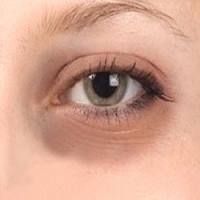 Dark circles under the eyes is a common problem. Dark circles makes one look weak and dehydrated. The skin around the eyes is very delicate and thinner than most areas of the face. There are no oil glands and the skin has a fine texture needing extra care and attention. As we get exposed to sun rays, the skin under the eyes gets damaged and becomes more thin and wrinkled. The veins below this thin skin start looking prominent. Thus the wrinkles and prominent veins form dark circles. Sometimes, pigmentation also causes dark circles.
Dark circles under the eyes is a common problem. Dark circles makes one look weak and dehydrated. The skin around the eyes is very delicate and thinner than most areas of the face. There are no oil glands and the skin has a fine texture needing extra care and attention. As we get exposed to sun rays, the skin under the eyes gets damaged and becomes more thin and wrinkled. The veins below this thin skin start looking prominent. Thus the wrinkles and prominent veins form dark circles. Sometimes, pigmentation also causes dark circles.
The causes of dark circles around the eyes can be due to hereditary factors, lack of sleep, illness, stress, fatigue and nutritional deficiencies. Sinus problems and pregnancy are also causes of dark circles. Hormonal imbalances as a product of menstruation, pregnancy or menopause can also cause dark circles. To overcome the dark circles problem you need to have a nutritious and balanced diet. The skin under the eyes also turns dark as we advance in age.
You can avoid application of costly creams and follow natural methods to remove dark circles around your eyes.
Here are a few natural remedies for treating dark circles under your eyes.
- Tomato paste
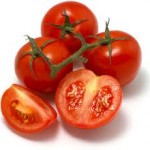 Tomato paste is one of the most effective remedies for dark circles. Available in every kitchen. Take one or two fresh tomatoes, one tablespoon of lemon juice and a pinch of gram flour and turmeric powder. Blend these ingredients nicely until they become a thick paste and apply it very gently around your eyes. Rinse it off gently with clean water after 10 or 20 minutes. You can repeat this process twice or thrice every week , makes the skin tone around your eyes lighter and will eventually make your dark circles go away completely.
Tomato paste is one of the most effective remedies for dark circles. Available in every kitchen. Take one or two fresh tomatoes, one tablespoon of lemon juice and a pinch of gram flour and turmeric powder. Blend these ingredients nicely until they become a thick paste and apply it very gently around your eyes. Rinse it off gently with clean water after 10 or 20 minutes. You can repeat this process twice or thrice every week , makes the skin tone around your eyes lighter and will eventually make your dark circles go away completely.
- Fresh cucumber or Potato
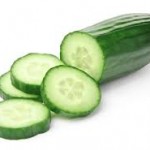 Place thin slices of fresh cucumber or potato over your eyes can help reduce dark circles to a great extent. It also provides your eyes a soothing touch which further prevents the occurrence of dark circles around your eyes. Optional method is mixing cucumber juice with potato juice in equal quantities and dip cotton balls in it and place over the eyes. Leave it for 15 to 30 minutes .This helps remove puffiness along with dark circles around eyes. Plan for a short nap. For best results follow this schedule twice or thrice e week.
Place thin slices of fresh cucumber or potato over your eyes can help reduce dark circles to a great extent. It also provides your eyes a soothing touch which further prevents the occurrence of dark circles around your eyes. Optional method is mixing cucumber juice with potato juice in equal quantities and dip cotton balls in it and place over the eyes. Leave it for 15 to 30 minutes .This helps remove puffiness along with dark circles around eyes. Plan for a short nap. For best results follow this schedule twice or thrice e week.
- Mint leaves
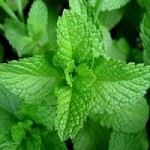 Applying crushed mint leaves over your eyes will not only soothe your eyes but will also help you in getting rid of dark circles. Apply freshly crushed mint leaves all around your eyes and leave it for 5 or 10 minutes. Then gently wipe it off with a clean and cold cloth.later wash your eyes. You will feel extremely relaxed and will also get rid of under eye dark circles gradually.
Applying crushed mint leaves over your eyes will not only soothe your eyes but will also help you in getting rid of dark circles. Apply freshly crushed mint leaves all around your eyes and leave it for 5 or 10 minutes. Then gently wipe it off with a clean and cold cloth.later wash your eyes. You will feel extremely relaxed and will also get rid of under eye dark circles gradually.
- Almond Oil
Almond oil is a natural ingredient which is very beneficial for the delicate skin around your eyes. All you need to do is to apply a little almond oil over the dark circles before going to bed and wash it off with cold water the next morning. Repeating this for at least a month will make your dark circles disappear almost entirely.
- Rose water and used tea bags
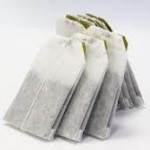 Along with external care and a healthy lifestyle, take time off for relaxation, using eye pads. Take cotton wool and make two thick square pads. They can be soaked in cucumber juice or rose water. Lie down, close your eyes and put the soaked pads on them. Keep them on for about 15 minutes.
Along with external care and a healthy lifestyle, take time off for relaxation, using eye pads. Take cotton wool and make two thick square pads. They can be soaked in cucumber juice or rose water. Lie down, close your eyes and put the soaked pads on them. Keep them on for about 15 minutes.
Used tea bags can also be used as eye pads.
Applying a compress of iced water , orange juice or cold milk directly over closed lids for 15 to 20 minutes also helps.
What to do when I’m travelling:
When you are on travel and do not have time to indulge in home remedies you can even apply cream rich in Vitamin E and Vitamin C for reducing the dark circles around the eyes.
Precautions:
- Do not apply facial masks around the eyes. Protect the area with cucumber slices or thin potato slices. Ideal time for relaxing and removing dark circles too.
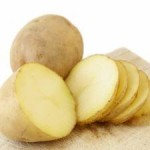
- Exercise daily. Include deep breathing exercises in your schedule, helps blood circulation, oxygenation and control of stress. Practice yoga and meditation. This helps to deal with stress and also oxygenates the body.
- Adequate sleep and relaxation are very important.
- Drink at least 15 glasses of water per day, keeps body hydrated and removes toxins, impurities from the system.
- Consume vegetables and fruits which are fresh and are rich in fibrous contents, keeps the system clear of toxins and prevent dark circles under the eyes.
WHY DOES NOSE BLEEDING OCCUR?
March 20, 2013 by admin
Filed under Tips for Ayurveda
With the onset of summer season it is a common sight to see children and elders have an experience of nose bleeding. Usually only one nostril will bleed. In summer during traveling hot waves are common and the nose is the organ that intakes hot air.
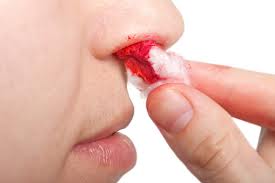 Nose bleeding is known as Epistaxis problem. In Ayurveda nose bleeding is known as naasagata rakta pitta. It creates panic for children and individuals who are experiencing it the first time. On seeing blood all of a sudden they will feel dizzy, disturbed and would prefer to be indoors for the rest of the day.
Nose bleeding is known as Epistaxis problem. In Ayurveda nose bleeding is known as naasagata rakta pitta. It creates panic for children and individuals who are experiencing it the first time. On seeing blood all of a sudden they will feel dizzy, disturbed and would prefer to be indoors for the rest of the day.
It is not a health problem, so do not worry. Understand the basic causes and how to prevent nose bleeding from occurring.
Why does nose bleeding occur?
There are a great many tiny blood vessels in the delicate lining of the nose. These small capillaries are easily broken. Any number of things can rupture some of these small vessels and cause a nose bleed.
The blood coming from the nose during a nosebleed can be a continuous stream or a small trickle. It may look as if you are losing a lot of blood, but not much blood is actually lost during the typical nosebleed.
As bleeding from nose comes on suddenly and without warning, it can be unnerving, nosebleeds can usually be managed easily at home. Gently wash your nose with cold water and wipe the area dry.
How to stop bleeding from the nose?
1. Calmly sit down in an upright position, do not lean back in the chair. This will help to keep blood from going down the back of your throat. Breathe through your mouth.
2. Tilt your head forward (not backward).
3. Place your thumb and forefinger on either side of the bridge of your nose and pinch the soft part of your nose firmly for ten minutes without releasing. Apply pressure firmly enough to slow bleeding, but not so strongly as to cause discomfort. Pressure decreases the blood flow through the affected area, slowing bleeding.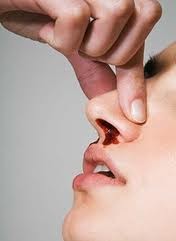
You can also place a cold compress / ice cubes on the bridge of your nose. Secondary measure as ice pack may not be available around when nose bleeding starts. Help constrict the local blood vessels.
4. After ten minutes, release the nostrils slowly and check to see if the bleeding has stopped. Avoid touching or blowing your nose. If the bleeding has not stopped, apply pressure for another ten-minute period.
5. If your nose is still bleeding steadily after twenty minutes of pressure, call your Doctor for further guidance.
Avoid going out in the sun. Use head covering and cover your nose to prevent hot waves. Take care of your health. You can understand how to prevent nose bleeding in summer and follow the diet changes to suit the external temperatures and improve your health.
HOW TO PREVENT NOSE BLEEDING IN SUMMER?
March 20, 2013 by admin
Filed under Tips for Ayurveda
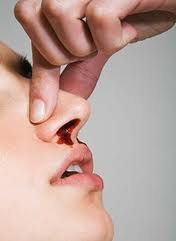 Nose bleeding occurs in summer when the tiny blood capillaries get ruptured due to hot waves or picking at the dry mucus inside the nose. The sudden trickle of blood makes the individual get panicky. You can follow the preventive measures mentioned and take care of your health.
Nose bleeding occurs in summer when the tiny blood capillaries get ruptured due to hot waves or picking at the dry mucus inside the nose. The sudden trickle of blood makes the individual get panicky. You can follow the preventive measures mentioned and take care of your health.
What are the Preventive measures of nose bleeding?
- Do not go out in the hot weather. Cover your head with a cap and cover the nose with a folded kerchief or cotton cloth to avoid hot air coming in.
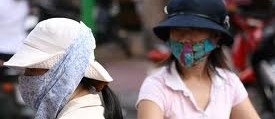
- Placing Air conditioners and Air coolers will maintain some humidity in the air.
- Avoid picking your nose and blowing your nose hard if it’s blocked due to cold and dried mucus.
- Avoid alcohol, smoking and hot drinks because they expand the blood cells in the lining of your nose
- After the bleeding stops, the blood clots inside the nose. Do not try to remove the dried mucus and blood. Clean nose when wet or with a wet paper towel.
Home remedies and Ayurvedic reference for nose bleeding:
- Stop nosebleed by dipping a cotton ball or plain sterile gauze with white vinegar and place it in your nose. Leave it in place for at least ten minutes. The acid of the vinegar will gently cauterize the inside of the nose and stop the bleeding.
- Applying cold compress or ice cubes above the nose or across the bridge of the nose will also help control the bleeding.
- Place a cloth or cotton gauze dipped in lemon juice, provides excellent relief.
- Place a cotton gauze dipped in rosewater or onion juice cloth dipped in Onion juice and place over nostrils.
- Juice of fresh coriander leaves can be used as nasal drops.
- Soak two figs (Anjeer) in water overnight. Eating them with water in the morning, helps to overcome nose bleeding.
Diet to be followed:
- Avoid spicy and items that give heat to the body.
- Consume coolants , coconut water and butter milk.
- Keep away from stress and tensions.
- Body and mind requires rest, have a sound sleep at night.
If you are getting this problem often do consult your doctor. If you are above 50 years of age the nose bleeding could be due to Blood pressure problems and need medical intervention.
Further reading: Get rid of Prickly heat with Home Remedies
HOW TO REDUCE KNEE PAINS OR JOINT PAINS
February 25, 2013 by admin
Filed under Tips for Ayurveda
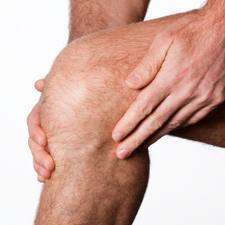 Knee joint is the most complicated weight bearing joint of the body which provides movements to us like walking, sitting, standing, running and possesses structures like bones, ligaments, muscles, tendons nerves that supplies the sensation.We extensively use the knees and therefore they are affected by wear and tear.
Knee joint is the most complicated weight bearing joint of the body which provides movements to us like walking, sitting, standing, running and possesses structures like bones, ligaments, muscles, tendons nerves that supplies the sensation.We extensively use the knees and therefore they are affected by wear and tear.
Causes of knee pain
- Arthritis – which include osteoarthritis, rheumatoid arthritis and gout.
- Injury – a it is the most responsible joint of the body so there is increase risk of injury which, can damage to bone, ligament and cartilage that ultimately leads to severe knee pain.
- Infection – any kind of infection to the knee joint may result in knee pain.
- Obesity and advanced age – Both are very common cause of knee pain.
- Overuse – overuse of knee joint can ultimately lead to intense knee pain.
- Sprain- due to sudden unnatural movements , it causes pain as well as restriction of movement of the knee joint.
- Dislocation of the knee cap – Also causes severe knee pain.
- Other causes – Include Sarcoidosis, Sickle cell anemia, Lupus, Kawasaki disease, Crohn’s disease, Ulcerative colitis, bone tumors, bleeding disorders etc.
General symptoms associated with knee pain
- Swelling
- Tenderness
- Stiffness
- Disability to move knee properly
The slow, controlled physical movement of joints is helpful for Arthritis patients. It improves the blood circulation in joints, removing unwanted toxins and other waste products. But the problem in the patients is if patient tries to move his limbs & joints then pain increases so patient does not move the limbs and problem increases. So it is vicious cycle, because of pain no movements and because there is no movement, the situation becomes worse. So patient should keep doing the movements which are possible for him.
Home remedies
Since your knees take so much of the impact of exercise and everyday living, it’s important to keep them healthy. Take note of the following home remedies to do just that.
Stay trim. More pounds of body weight (usually from body fat) can really stress the knees. So work on getting and keeping your weight within a healthy range (ask your doctor what that range is for you) by adopting a low-fat, lower-calorie diet, and getting regular exercise.
Buy shoes after looking at your feet. Buy the right shoes if your feet is slightly out of shape. You can order a pair after consultation with your doctor. Wear the lowest heel possible. The body can tolerate a heel of about one inch; higher heels throw the body forward and stress the knees. Use shoes as per activity. walking shoes for walking, running shoes for running, and so on. Wearing running shoes for walking can cause pain in the shins and, in some cases, knee pain.
Replace shoes as they get worn out. Often, knee problems are simply the result of walking or running in shoes that are worn out. Replace your athletic shoes every six months.
Don’t rely on OTC braces.. An OTC knee brace may make you aware of the knee and remind you to avoid over training, but it doesn’t really correct or prevent problems — in fact, it can give you a false sense of security and might tempt you to be less cautious than you should be.
Avoid “knee-busting” activities. Kneeling is painful, especially on hard surfaces.If you lift weights, never fully flex the knee, don’t “lock” your knees when you’re in the standing position, and keep the amount of weight you ask your knees to lift to a minimum.
If you’re doing some activity that requires kneeling, use a foam kneeling cushion or knee pads and give your knees frequent rest periods.
HOME REMEDIES TO PREVENT VARICOSE VEINS FROM OCCURING
February 8, 2013 by admin
Filed under Tips for Ayurveda
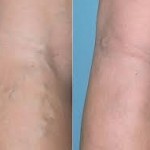 Varicose veins are veins under the skin of the legs, which have become widened, bulging, and twisted. Varicose veins are very common among women and and do not cause medical problems in most people. It is advisable to maintain your body with good exercises to prevent it coming at an young age. In case you are already affected you can manage your health with few simple remedies.
Varicose veins are veins under the skin of the legs, which have become widened, bulging, and twisted. Varicose veins are very common among women and and do not cause medical problems in most people. It is advisable to maintain your body with good exercises to prevent it coming at an young age. In case you are already affected you can manage your health with few simple remedies.
Maintain good hygiene and take care of your feet by regular massage. This will be very helpful in treating varicose veins.
Home remedies for Varicose Veins:
Ayurveda suggests that a well balanced diet is ideal to maintain health and relieve body from stress and constipation.
- Eat a proper diet with plenty of fresh fruits, vegetables, seeds, nuts, whole grains, soya products and fish. Avoid food rich in carbohydrates and fats.
- Eat fibrous food, as this will keep the bowels clean. This will prevent varicose veins from occurring and will also keep you away from various other ailments.
- Fresh fruit juices are very helpful to minimize Varicose veins. Pineapple is also very effective in the treatment of varicose veins. Pineapple juice should be consumed once a day in case there is severe pain and swelling.
- Raw vegetable juices are highly beneficial. A combination of carrot juice and spinach juice is proven home remedy for treating varicose veins. You can have 300 ml of carrot and 200 ml of spinach juice at a time.
- Onion, ginger and garlic are effective for proper blood circulation in the body. Include them while cooking food. It will minimize the pain of varicose vein.
- Supplements of Vitamin E & Vitamin C are found to be favorable home remedies for varicose veins.
- Avoid starchy foods like potatoes.
- Blackberries and cherries are also effective in preventing varicose veins from occurring
Massaging the affected areas:
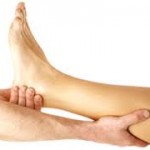 You can apply and massage the affected areas . You will see good improvement.
You can apply and massage the affected areas . You will see good improvement.
- Apply equal quantities of Almond oil and Vitamin E oil onto the affected areas and you will feel the relief from pain and heaviness. You can apply the oil mix daily for good results.
- A good home remedy for varicose veins is applying some apple cider vinegar on skin and around the affected area. This is to be done twice a day.
- Application of Vitamin E oil or comfrey, white oak bark or witch hazel tea. You can apply any one of this on the affected area.
- Fuller’s earth or Multanni mitti is popular for its magical effects on skin. When mixed with water and applied on the varicose veins affected areas as a pack, leave it overnight. You will witness great results.
- Applying castor oil over the swollen veins will reduce the swelling and heal the varicose veins fast.
- Massage the swollen veins with rosemary oil, as this will give relief from the pain.
- The herb called marigold is very good home remedy for varicose veins. A compress of marigold can be applied externally around the affected area. the flowers of this herb can also be tied around the varicose veins. Marigold reduces the swelling and pain.
- An alternate hot and cold bath is ideal. You can keep both the waters and pour alternatively on the affected area. A huge relief from the pain and tiredness.
- Hot Epsom salt bath is recommended. This strengthens your veins and may make them straight.
Exercise is a major remedy for varicose veins.
- Practice yoga daily. Yoga postures are very effective as home remedy for varicose veins as revealed by latest researches. Yoga postures such as gomukhasana, shalabhasana, sirshasana, viparitakarni, padmasana, vajrasana and sarvangasana are very helpful in reducing the pressure on the veins by draining the blood from the legs.
- Legs that are exercised are less likely to have varicose veins because they have good circulation. Perform leg exercises like squats, calf raises and leg lifts every other day.
Watch outs:
- Do not wear skintight pants or bottom wears. This may give pressure to the circulatory system and can create varicose veins.Instead use a stocking set that gives support to feet. You get in different sizes . Contact your nearest pharmacists.
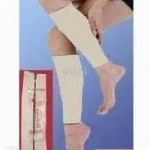
- Be sure to maintain a clean and healthy colon. Never remain constipated. This will minimize the appearance of varicose veins. Lukewarm water enema neutralizes the toxins from the body and colon. This is also useful in treating various disease including varicose veins.
- Varicose veins may turn into the surgical side. If home remedies and internal or external therapy does not work for long time, you need to consult the medical practitioner for further inputs on the problem. If it is left untreated, it may end up in major complications.
- Do not walk hard or run. Keep your legs slightly up when you sleep.
- In case you have to stand for long time while working then balance your weight equally on both the legs. Don’t put extra pressure on one leg.
- Rest is also important part of the day. Take rest whenever possible. Daily sleep of six to seven hours is a must for all of us.
- While watching television or reading books it is a good practice to rest your legs on a stool or chair in elevated position. This will reduce the pressure from your veins and help in treating the symptoms.
- Keep your legs elevated by 6 inches while sleeping.
Take good care of your health and spend time to pamper your skin too.
WHY DOES VARICOSE VEINS OCCUR FOR WOMEN AND THE AGED?
February 8, 2013 by admin
Filed under Tips for Ayurveda
Many of us have heard women complaining of pain in the legs after standing for long durations at functions or gatherings where we are constantly doing one errand or the other and develop severe pain by the end of the day. The pain is due to varicose veins, a common phenomenon for nurses and people with long standing jobs.
What are Varicose veins?
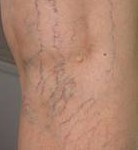 Varicose veins are large, raised, swollen blood vessels that twist and turn. They usually develop in the legs and can be seen through the skin.
Varicose veins are large, raised, swollen blood vessels that twist and turn. They usually develop in the legs and can be seen through the skin.
But Spider veins are smaller, red, purple, and blue vessels that also twist and turn. Spider veins are easily visible through the skin as well. They are also most often seen on the legs and face.
Varicose veins and spider veins often run in families and there may be a hereditary component. Women are more likely to suffer from varicose veins and up to 50% of women may be affected. High chances for people above 50 years to get affected by varicose veins due to weakness in valves of veins.
Causes of Varicose Veins
There are a number of factors that influence a person to varicose veins. These include:
- Prolonged standing – Occupations that involve a lot of standing, such as nurses, hair stylists, teachers, and factory workers.
- Obesity or bloated belly.
- Age – Generally, most elderly individuals show some degree of varicose vein occurrence.
- Hormonal influences during pregnancy, puberty, and menopause.
- Postmenopausal hormonal replacement or HRT (Hormone Replacement Therapy).
- The use of birth control pills.
- Heredity.
- A history of blood clots.
- Conditions that cause increased pressure in the abdomen including tumors, constipation, and externally worn garments.
- Pregnancy is associated with an increase in blood volume. Also, added pressure on the veins in the legs by the weight of the growing uterus and the relaxation effects of the hormones estrogen and progesterone on the vein walls contribute to the development of varicose veins during pregnancy.
- Straining: Chronic constipation, urinary retention from an enlarged prostate, chronic cough, or any other conditions that cause a person to strain for prolonged periods of time causes an increase in the forces transmitted to the leg veins and may result in varicose veins. These mechanisms also contribute to the formation of hemorrhoids, which are varicosities located in the rectal and anal area.
- Prior surgery or trauma to the leg: These conditions interrupt the normal blood flow channels.
- Defective or damaged valves within the veins is the main cause. Valves prevent backward flow of blood within the vein. They keep blood in the vein moving towards the heart. Due to poor functioning of valves the blood flow actually reverses and flows down the superficial veins, when it should be flowing up, towards the heart.
Composition of a Varicose Vein
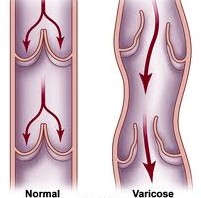 Veins are blood vessels that carry deoxygenated blood to the heart (except for pulmonary veins, which transport oxygenated blood). Varicose veins are the result of a breakdown or faulty design of the valve structure within the veins. Folds in the vein’s inner wall form valves that close temporarily after each heartbeat to prevent the blood from flowing backward until the next pump of the heart moves it on. This assists in returning blood to the heart against the pull of gravity. If these valves become weakened and blood does not flow, blood pools in the area and vein walls can become swollen and inflamed—the condition known as varicose veins.
Veins are blood vessels that carry deoxygenated blood to the heart (except for pulmonary veins, which transport oxygenated blood). Varicose veins are the result of a breakdown or faulty design of the valve structure within the veins. Folds in the vein’s inner wall form valves that close temporarily after each heartbeat to prevent the blood from flowing backward until the next pump of the heart moves it on. This assists in returning blood to the heart against the pull of gravity. If these valves become weakened and blood does not flow, blood pools in the area and vein walls can become swollen and inflamed—the condition known as varicose veins.
Symptoms of Varicose Veins
Individuals experience severe pain, described as an aching or cramping in the legs. Other common symptoms include tiredness, restlessness, burning, inflammation, itchy, or heaviness in the legs.
In women, symptoms may be worse during certain parts of the menstrual cycle or during pregnancy. Patients also may develop swelling, ulcers (deep sores), and an increase in the pigmentation or darkening of the color of their skin, especially in the ankle region.
Occasionally, varicose veins can form a painful blood clot with inflammation of the vein called thrombophlebitis. Rare causes of profuse bleeding from the veins occur due to obstruction of blood flow or superficial injury on the sores in extreme cases.
Preventive measures
It is advised to consult the Medical Practitioner when you feel excess pain and swollen up veins. There are instances where varicose veins spontaneously disappear, but often they do not. Many treatments are available, so check with your doctor. The Doctor will guide you on the tips to prevent re-occurrence of varicose veins. Common preventive measures include:
- Avoid standing in one position for long periods of time. If it is inevitable that you must stand, prop one foot on a stool for 5 minutes, and then switch legs. Stand with knees slightly bent, not locked in position.
- Put your feet up at the end of the day. Pain caused by varicose veins is usually relieved by elevating the legs. You can elevate your legs by placing a stool during seating positions and place an additional thin pillow to raise your feet approximately 6 inches during bed time. With this height you need not fear about gravity, blood flowing towards the head.
- Massage your foot . Pressure from massage facilitates blood away from the feet and legs. Avoid wearing high heeled foot wear as high heels puts additional pressure and minimizes blood flow.
- Keep your weight down. It is more difficult for the heart to pump blood efficiently when you are overweight. Reduce over weight. Do walking daily at least for 30 mins in the morning.
- Minimize salt intake: Sodium, or salt, causes swelling in tissue, which can impede blood flow and put strain on leg veins.
- Avoid alcohol. Alcohol dilates veins, increasing blood flow to feet and legs.
- Quit smoking. It may contribute to high blood pressure, which can aggravate varicosity.
- If you sit for long periods, stand up periodically. The same is true if you stand for long periods, sit periodically. Keep your body constantly changing positions. Keeping one position for long periods is very demanding on a body.
- Wear support stockings. Support hose keeps blood from pooling in feet and legs, and helps the veins return blood back to the heart. These stockings can generally be purchased at any surgical supply store and at some pharmacies.
Simple Exercises to strengthen your legs:
Legs that are exercised are less likely to have varicose veins because they have good circulation. Perform leg exercises every other day. Some examples of leg exercises include:
- Squats: Slowly lower your rear as if you are going to sit down in a chair. Make sure your knees are not over your toes when in squat position. Hold the squat position for three seconds and slowly rise back to standing. Perform this move until you are unable to perform a squat with proper form.
- Calf Raises: With a wall nearby for support, stand with legs straight and slowly raise up onto ball of foot and lower. For greater intensity, perform on stairs, extending heels below stair level for maximum stretch. Do as many as you are able until calves are fatigued. To increase intensity, do calf raises one leg at a time.
- Leg Lifts: Sit on floor with legs straight out in front of body. One leg at a time, raise leg and make small circles with foot and leg, keeping leg straight. Do ten circles in one direction, and ten in the other. Switch legs.
Treatment options
The treatment for varicose veins depends on the diagnosis and the severity of the problem for the patient. In few cases Sclerotherapy, Endovenous Laser Treatment, Radiofrequency Occlusion, Lasers and Intense Pulsed Light and Surgery is recommended.
Surgery is done for individuals with large varicose veins or severe clots. Surgery may be performed using local, spinal, or general anesthesia. Most patients return home the same day as the procedure.
Ayurveda recommends simple home remedies to minimize Varicose veins:
Simple home remedies for you to implement
- Mix fuller’s earth with water to form a thick paste. Apply this as a pack on your legs and let it remain overnight. This reduces the swelling and pain. Wash away with warm water.
- Use the herb called marigold . Marigold flower as a compress can be applied over the painful areas. The flowers can be tied around the areas affected. It reduces swelling and pain.
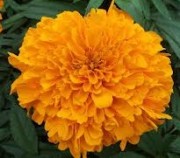
- Mix ten drops of pure essential chamomile oil and four ounces of desired moisturizer cream. Apply this essential oil cream mixture two to three times a day to areas where there are Varicose veins . Chamomile is an anti-inflammatory is used to calm acne, eczema, rashes, dermatitis, dry and itchy skin and other allergic conditions in general.
- Yoga helps reduce the occurrence – Yogaasanas such as the Sarvangaasana, Halaasana, and Pawan muktaasana series promote circulation and the drainage of blood from the legs.







